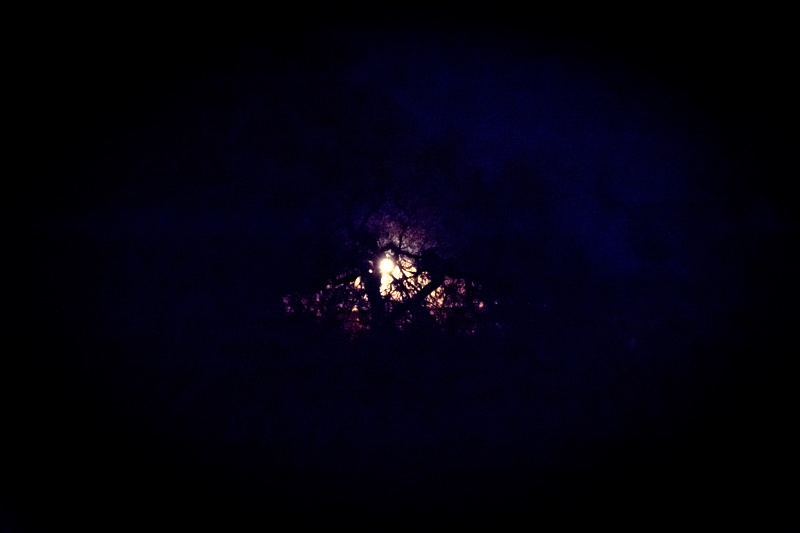Vignetting Tests; NightCap Pro tests;
NGC3926, Jupiter; Faint Galaxies Observing
Posted: 15 April 2017
The sky was cloudy again on Thursday, 13 April 2017. Missed out on a good pass of the International Space Station. Friday, 14 April, dawned clear and calm. Winds came up mid-day and the sky became very hazy. Decided to go to the observatory anyway.
|
Open: Friday, 14 April 2017, 1845 MST Temperature: 86°F |
Session: 1098 Conditions: Clear, hazy, breezy |
Equipment Used:
12" f/8 LX600 w/StarLock
2" 24mm UWA eyepiece
Camera:
D7200 DSLR
iPhone 6s Plus
1852 MST: LX600 ON, StarLock OFF, High Precision OFF.
1853 MST: sunset. Set up for DSLR imaging tests at prime focus, without and with the focal reducer, using a visual back, without and with its spacer extension. I am hoping these tests will allow me to create an Adobe Lightroom "lens profile" for the 12" telescope. These are the images with the following configurations (left-to-right): prime focus, prime focus + spacer, focal reducer + spacer, and focal reducer:




Surprisingly there was very little difference in the vignetting when using the spacer. For convenience I will continue to use the spacer on future sessions.
1913 MST: completed the vignetting tests.
1922 MST: did some tests of the soon-to-be-released NightCap Camera v9.0 (formerly called "NightCap Pro") for the developer. These photos were taken using the "Artificial Intelligence" automatic exposure settings:


1933 MST: slewed the 12" telescope to the colliding galaxies NGC2936, which would be the first faint galaxy imaging target for the night. I then moved the observatory dome onto the PZT.
1940 MST: the neighbor to the south had his bright unshielded floodlight come on. This light shines directly into the observatory:

I had mentioned it to him when he first built his house a few years ago but he never did anything with it. Fortunately, the light (on a motion sensor) is not on very often, but when it is on it is definitely a light nuisance and a source of light pollution. I will be contacting the neighbor again.
1956 MST: the breezes had calmed down now and Astronomical Twilight was almost over (and the neighbor's light was now off). Tried to observe NGC2936, colliding galaxies, 102X, but due to the small size and faintness I was never certain I saw them. I began setting up to image the galaxies. Mounted the D7200 DSLR with the focal reducer (no spacer), focused on the star Regulus, and locked the focus. 2008 MST: StarLock ON.
I did a couple of 1 minute, ISO 6400, framing test exposures and then did longer exposures. Unfortunately, the breezes came up again and seeing was not good enough for accurate StarLock autoguiding. This is a full-frame, autoguided, 3 minute, ISO 6400, White Balance 3570K, image of NGC2936:

I then tried to image NGC4038, another pair of colliding galaxies, but seeing was very bad and autoguiding was lousy. Gave up trying to image faint galaxies this session. 2048 MST: StarLock OFF. Removed the camera.
2057 MST: began viewing several faint galaxies, 102X. First were NGC4038 and then NGC2936 (barely visible using averted vision). 2101 MST: moved the dome back onto the observatory walls. Resumed viewing faint galaxies, 102X. Tried for NGC4676 (colliding galaxies) but it was too faint and small. NGC5395 (colliding galaxies) was easier to see. Then tried for NGC6622 (colliding galaxies) but it was too low in the northern sky to be viewable. Next, viewed NGC4565 (Needle Galaxy); very nice view of this large galaxy with some structure visible using averted vision. Next viewed the galaxy NGC5529, which was faintly visible. Then viewed the Draco Galaxy Trio (NGC5981, NGC5982, and NGC5985). All three galaxies were easily seen in the same 102X eyepiece field-of-view.
2123 MST: it was getting windy now. Viewed NGC6543 (Cat's Eye Nebula, planetary nebula), 102X. Pretty sight. Then viewed the Coma Galaxy Cluster (Abell 1367), 102X. Several faint galaxies were visible.
2134 MST: ended galaxy viewing and slewed to the planet Jupiter. There was an interesting configuration of the four Galilean Moons and the Great Red Spot was visible. The Great Red Spot is definitely smaller than in previous years but it is once again much redder than in recent years. Set up for eyepiece projection imaging at 271X with the DSLR. This is a single frame image, 1/40sec, ISO 1600, showing the planet with three moons on the left and one on the right and the Great Red Spot in the Southern Equatorial Belt:

This image is a stack of 318 HD video frames, 1/60sec, ISO 1600, 271X:

2150 MST: was too windy now. Began closing up for the night.
|
Close: Friday, 14 April 2017, 2208 MST Temperature: 63°F |
Session Length: 3h 23m Conditions: Clear, windy |
Comments are welcome using Email. Twitter users can use the button below to tweet this report to your followers. Thanks.
Cassiopeia Observatory Home Page
Copyright ©2017 Michael L. Weasner / mweasner@me.com
URL = http://www.weasner.com/co/Reports/2017/04/15/index.html
